Braces: ceramic, metal, invisible, sapphire

specialists

equipment

treatment
Not just for beauty
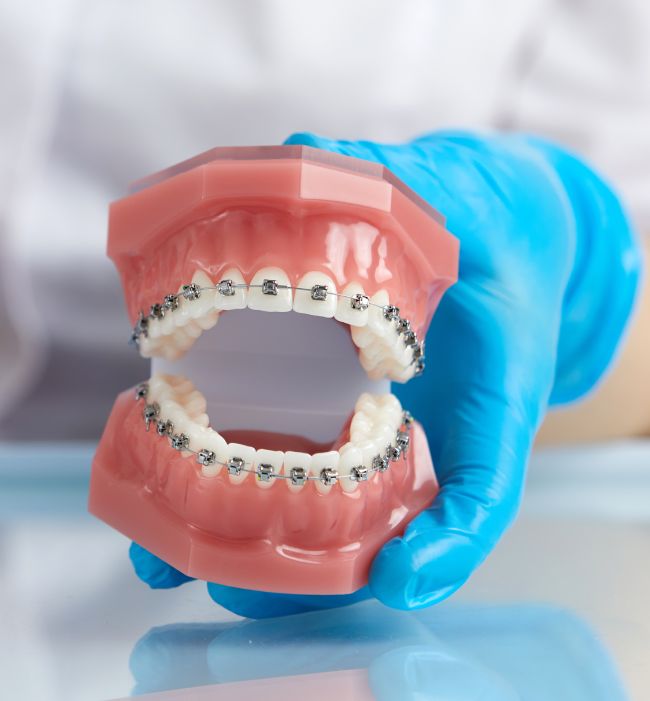
Braces are often perceived as a way to improve the appearance of your smile, but their main purpose is to correct orthodontic defects. Misaligned bites, too-close teeth or gaps between teeth (diastema) not only spoil your smile, but can also cause health problems. Braces help improve chewing function, diction and facilitate oral care.
When it is necessary to install a brace system:
- Improper bite (open, crossed, deep, etc.)
- Irregular teeth
- Preparation for installation of implants and prosthetics
- Promote teething
- Large gaps between teeth
- Crowded dentition
However, installing braces is not suitable for everyone. There are medical contraindications, such as severe systemic diseases (diabetes mellitus, cancer, neuropsychiatric disorders such as epilepsy, psychosis, schizophrenia), as well as bleeding disorders. Contraindications also include caries, pulpitis, periodontitis, periodontal disease, oral cancer and bone diseases.
Before installing braces, a thorough assessment of your oral health and overall health is necessary. This will help you avoid complications when installing braces and choose the most appropriate treatment method. It is also important to maintain good oral hygiene and follow your orthodontist's recommendations while wearing braces to achieve better results and avoid developing oral diseases.
First appointment with the orthodontist
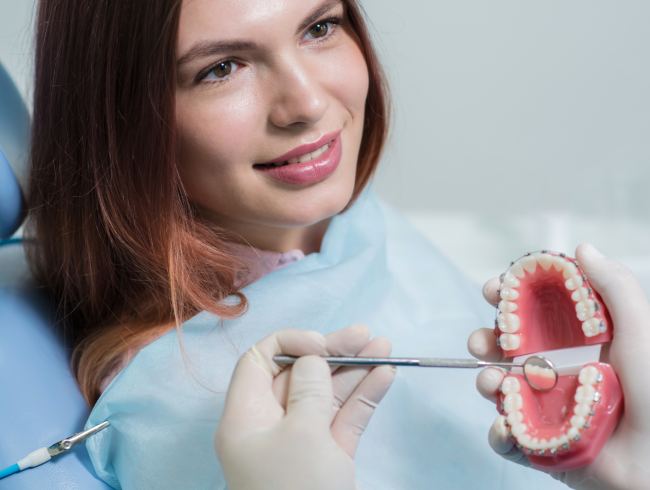
The first visit to the orthodontist is a key step in the dental care process for both children and adults. The ideal time to start monitoring for children is considered to be the age of 6-7 years, when permanent teeth begin to emerge. However, it is important to remember that if any irregularities in the growth of teeth are detected, you should consult a specialist, regardless of age.
During the first appointment, the orthodontist primarily pays attention to the following aspects:
- Harmonious facial development
- Attaching the frenulum of the upper lip and tongue
- Depth of the vestibule
- Condition of the oral mucosa
- Patient's speech
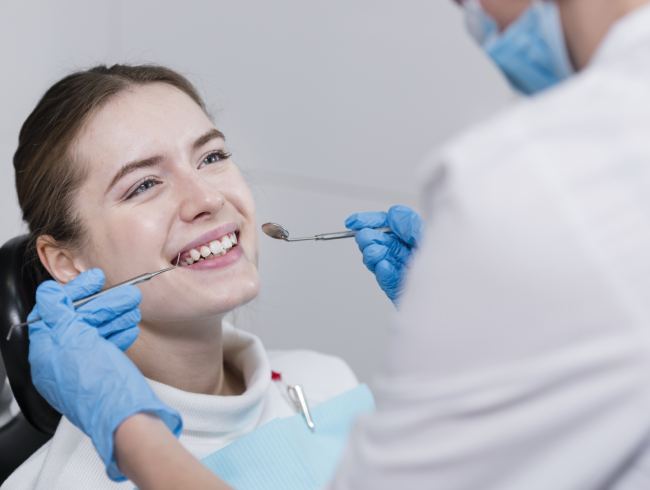
In addition to the external examination, the doctor conducts a conversation with the child and parents to collect anamnesis, including information about the child’s health, the nature of pregnancy and childbirth, as well as the type of feeding. This helps to evaluate possible factors influencing the formation of dental anomalies.
An important part of the initial examination is diagnostic procedures, such as an orthopantomogram, which allows you to assess the condition of the dental system, the presence or absence of the rudiments of permanent teeth, the location of the roots of temporary teeth and the stage of their development. It can also identify carious cavities, inflammatory processes and the condition of the bone structures of the jaws. Depending on the age and individual characteristics of the patient, the orthodontist may prescribe additional studies, such as X-ray of the TMJ, electromyography or computed tomography.
Communication with your doctor plays an important role in the treatment process. Parents and adult patients should clearly express their questions and concerns so that the specialist can plan braces treatment as effectively as possible and select appropriate correction techniques. Proper preparation for the visit, including explaining the procedures and treatment process to the child, helps reduce anxiety and ensure a more successful interaction with the orthodontist. But how are braces installed?
Braces: installation process step by step
It is important to understand that the treatment process is individual and depends on many factors, including the age and structural features of the patient’s jaw.
Consultation and diagnostics. Treatment begins with a visit to the orthodontist. At the initial consultation, a specialist examines the oral cavity, takes x-rays and photographs of the teeth. This is necessary to assess the condition of the jaw and plan treatment
Preparation for installation. Before installing braces, the doctor carries out comprehensive preparation: cleans the teeth of plaque and stone, treats caries and, if necessary, removes excess teeth. This preparation provides optimal conditions for treatment
Installing the braces system. At this stage, the orthodontist attaches the braces to the teeth. The locks (braces) are fixed with special glue and then connected with a metal or plastic arch. The arc provides the necessary pressure for movement
Regular monitoring and adjustment. Constant monitoring and adjustment of the brace system is critical. The patient should visit the orthodontist every 4-6 weeks for arch wire replacement and pressure adjustments
Professional oral cleaning. A thorough professional cleaning should be performed to remove any adhesive residue, remove tartar, and even out color after braces are removed.
Remineralization of enamel. The remineralization procedure is aimed at restoring the mineral composition of the enamel and strengthening the teeth against possible caries
Use of retainers. The period of stabilization of treatment results begins immediately after removal of braces. Retainers, or holding devices, help maintain the results achieved and prevent teeth from moving back
Hygiene maintenance and regular monitoring. At the final stage, the patient must continue to maintain oral hygiene, regularly visit the dentist for preventive maintenance and not smoke, as this affects the condition of the teeth after treatment
Последующий уход
After removing dental braces for adults, it is important to follow a number of recommendations to maintain the achieved results. This is necessary, since the dental system has the property of “memory”, and the teeth may tend to return to their original position. Also, the enamel weakens while wearing braces and requires maintenance.
During the retention period, it is important to avoid foods that are too hard and sticky, which can damage the retainers. It is also recommended to limit the consumption of coloring drinks and foods to prevent pigmentation.
To maintain healthy enamel after removing braces, you can use special remineralizing gels and toothpastes rich in fluoride, calcium and other minerals. This helps strengthen the enamel and reduce tooth sensitivity.

Maintaining oral health
- Regular teeth cleaning You should brush your teeth at least twice a day using a soft-bristled brush and quality toothpaste.
- Using an irrigator and thread These tools help remove food debris and plaque from hard-to-reach areas, especially around retainers.
- Regular visits to the dentist It is recommended to visit the dentist every 3-6 months for prevention and control of oral health.
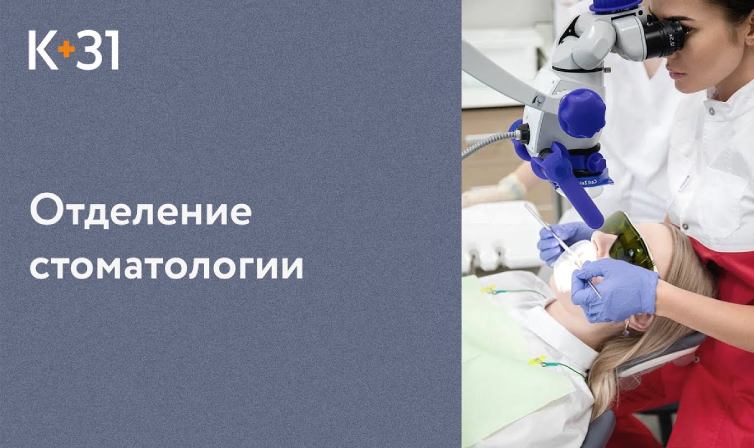
Modern methods of diagnostics and dental treatment at "K+31"
Our doctors

This award is given to clinics with the highest ratings according to user ratings, a large number of requests from this site, and in the absence of critical violations.

This award is given to clinics with the highest ratings according to user ratings. It means that the place is known, loved, and definitely worth visiting.

The ProDoctors portal collected 500 thousand reviews, compiled a rating of doctors based on them and awarded the best. We are proud that our doctors are among those awarded.
Make an appointment at a convenient time on the nearest date
Price
















































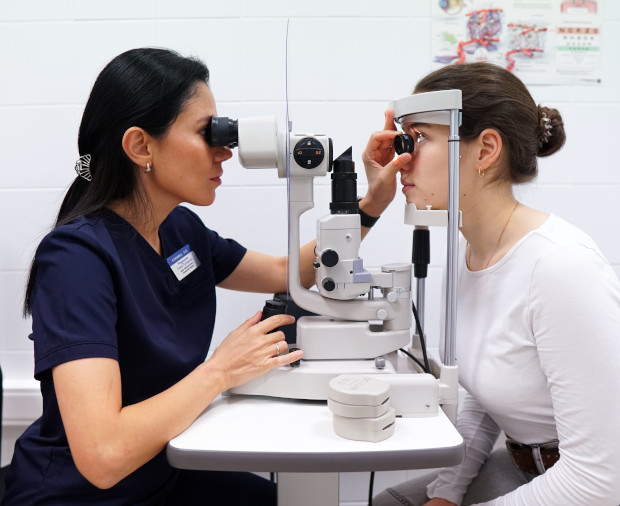




The mechanism of teeth straightening with braces
Brackets correct defects in the dentition. Each tooth is held in place by a ligament that allows it to move when controlled pressure is applied.
The bracket system includes a metal arch and locks for fixation. The arch, having the property of “memory” of shape, tends to return to its original state, thereby pulling the teeth in the right direction.
Movement occurs due to the pressure of the arch, which stretches the ligaments, while the bone tissue of the jaw undergoes remodeling, decreasing on one side and restoring on the other. The process is gradual and controlled, which guarantees a stable position of the tooth after correction.
Brackets differ in the ligation mechanism, that is, in the method of fixing the arch. Self-ligating ones minimize pressure and facilitate the correction process. Ligatures use rubber bands or wires for fixation, increasing friction and pressure.
Additional devices may be required to achieve treatment goals:
These additional elements enhance the effectiveness of the bracket system, allowing you to solve complex problems. The use and sequence of application of these instruments is determined by the orthodontist, based on diagnostic data and the individual characteristics of the patient.